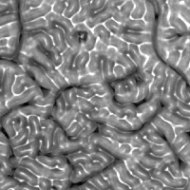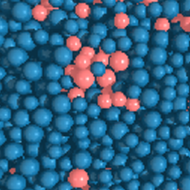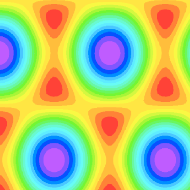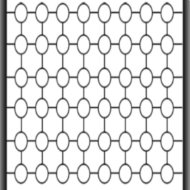Goal
To reveal universal features of nonlinear phenomena from a viewpoint of hierarchy
Hierarchical structure (or hierarchy, simply) is a layer arrangement of objects, values, categories, etc. As with [faculty - department - laboratory] in universities and [department - division - section - unit] in companies, pyramid-type hierarchical structures are formed in human community. On the other hand, in nature, hierarchy emerges spontaneously with regard to spatial and temporal scale. For example, there exist [cell - protein - atom and molecule] in biology and [supergalaxy - galaxy cluster - galaxy - star] in universe.
By focusing on a single scale, natural phenomena are approximately described by a linear law. The Hooke's law can represent the load-extension relation of springs; note that this linear law holds only in the case of sufficiently small load. However, many familiar phenomena consist of several scales that interact with each other. To describe such phenomena, nonlinear effect is essential.
I've studied several nonlinear phenomena by theoretical analysis and numerical simulation based on the idea of statistical physics. A special interest is developed in why and how hierarchy in nature appears, and which functions emerge from the organization of hierarchy. As it is difficult to study universal features so far, I engage in several themes relevant to hierarchical structure; in future, I try to extract the universal understanding from those themes.
Theme
Keyword
- Terms
- nonlinear phenomena, competition, self-organization, emergence, irreversibility, disturbance, noise, complex systems
- Fields
- statistical physics, non-equilibrium physics, nonlinear science, computational science
- Methods
- analysis in math, numerical calculation for partial differential equations, molecular dynamics simulation, Monte Carlo simulations, multi agent simulations
Budgets
2024 budget year @ Yamaguchi University
2023 budget year @ Yamaguchi University
2022 budget year @ Yamaguchi University
2021 budget year @ Yamaguchi University
2020 budget year @ Yamaguchi University
2019 budget year @ Yamaguchi University
2018 budget year @ Yamaguchi University
2017 budget year @ Yamaguchi University
2016 budget year @ Kyushu Sangyo University
- Grants-in-Aid for Scientific Research (KAKENHI)
- for Scientific Research (C) No. 26400180 [as Co-Investigator (PI: Koichi Osaki, Kwansei Gakuin University)]
- Funds in university
- for research and education
- for physics experiment
2015 budget year @ Kyushu Sangyo University
- Grants-in-Aid for Scientific Research (KAKENHI)
- for Scientific Research (C) No. 26400180 [as Co-Investigator (PI: Koichi Osaki, Kwansei Gakuin University)]
- Funds in university
- for research and education
- for physics experiment
- for young scientist
2014 budget year @ Kyushu Sangyo University
- Grants-in-Aid for Scientific Research (KAKENHI)
- for Scientific Research (C) No. 26400180 [as Co-Investigator (PI: Koichi Osaki, Kwansei Gakuin University)]
- Funds in university
- for research and education
- for physics experiment
- for young scientist




